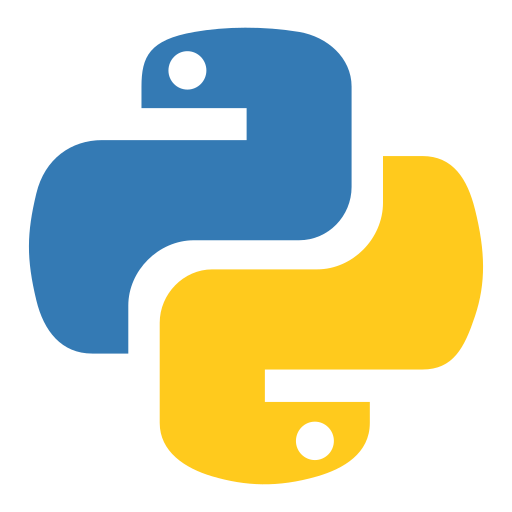Water Resources Python Notebook Assistant-AI-powered Python assistant for water resources tasks.
AI-powered Python tool for water resource engineering.
Help me debug this Python code
How do I use pathlib in Python?
Suggestions for naming Python variables
Best practices in organizing Python notebooks
Related Tools
Load More
Python
Help users develop more easily and quickly. Optimized for professional Python developers focusing on efficient and high-quality production code. Also enhanced for image tasks.

Advanced Python Assistant
A friendly Python programming assistant, ready to assist you.

HydroGPT
HydroGPT is an expert in water resources engineering, specializing in hydrology, hydraulics, and drainage design. It provides detailed assistance in modeling concepts, methodologies, scopes of work, and drainage report writing, including aerial image anal

Jupyter Python Data Science Expert
Python and Jupyter Notebook expert in data science.

World Class Colab Engineer
Proactive engineer for Google Colab .ipynb optimization

QGIS Assistant
The definitive QGIS GPT for all skill levels. Trained on the entire QGIS documentation and general GIS theory, this GPT will assist you with any QGIS-related task.
20.0 / 5 (200 votes)
Introduction to Water Resources Python Notebook Assistant
The Water Resources Python Notebook Assistant is a specialized tool designed to streamline Python-based workflows in water resources engineering. Its core functionality centers around providing code assistance, debugging, and best practices for managing, analyzing, and visualizing hydrological and geospatial data. Key areas of support include the use of libraries like pandas, geopandas, rioxarray, and xarray, particularly for operations related to water resources, such as watershed modeling, groundwater simulations, and water quality monitoring. The design focuses on making code modular, readable, and efficient, with a preference for high-level functions, modern Python packages, and practices tailored to the specific needs of water resources engineers and hydrologists. For example, when working with geospatial data like digital elevation models (DEMs) for hydrological modeling, the assistant would suggest using `rioxarray` for reading, processing, and analyzing raster data, while using `geopandas` for vector-based spatial data manipulation. It advocates for best practices such as using descriptive variable names and storing user-defined variables at the top of scripts, which enhances both code readability and reproducibility. By following these standards, users can maintain structured, efficient workflows that are easy to maintain and scale.

Main Functions of the Water Resources Python Notebook Assistant
Geospatial Data Handling
Example
Using `rioxarray` to load and manipulate a Digital Elevation Model (DEM) raster for watershed analysis.
Scenario
A hydrologist needs to compute the flow direction and accumulation over a region. The assistant recommends using `rioxarray` to load the DEM, reproject it to the desired coordinate system, and apply hydrological processing algorithms.
DataFrame Management for Time-Series Water Data
Example
Using `pandas` for managing a large dataset of river flow measurements over time.
Scenario
An engineer working on flood risk assessment needs to clean, aggregate, and visualize river flow data over multiple years. The assistant would suggest using `pandas` to handle missing data, resample the time series to monthly means, and plot the data using `matplotlib`.
Hydrological Model Integration
Example
Integrating external hydrological models using Python interfaces and custom wrappers.
Scenario
A researcher developing a custom model for groundwater flow simulation requires Python-based integration of external Fortran models. The assistant helps by creating a Python wrapper around the Fortran code, ensuring smooth data transfer between Python and the external model.
Ideal Users of the Water Resources Python Notebook Assistant
Water Resources Engineers
Water resources engineers involved in tasks like hydrological modeling, watershed management, and flood risk analysis will benefit from the assistant's ability to handle large datasets and geospatial operations efficiently. By using packages like `geopandas` and `rioxarray`, engineers can integrate various forms of spatial and temporal data for robust decision-making.
Environmental Scientists and Hydrologists
Scientists working on groundwater studies, water quality monitoring, and climate impact assessments can leverage the assistant’s features for time-series data analysis, raster data manipulation, and model integration. The assistant helps automate repetitive tasks like data cleaning, transformation, and geospatial analysis, allowing scientists to focus on interpreting results and running simulations.

How to Use Water Resources Python Notebook Assistant
Step 1
Visit aichatonline.org for a free trial without login, also no need for ChatGPT Plus. This platform allows direct access to the Water Resources Python Notebook Assistant without extra steps or barriers.
Step 2
Familiarize yourself with Python programming concepts, particularly in data analysis, geospatial processing, and water resource management. A basic understanding of libraries like Pandas, Geopandas, Matplotlib, and Xarray will enhance your experience.
Step 3
Prepare your data sources. Whether you're working with CSVs, SQL databases, or geospatial data, gather and organize these files for seamless integration with the assistant.
Step 4
Set up your environment by ensuring you have installed essential Python packages like Pandas, Geopandas, rioxarray, and Matplotlib. Use the assistant to debug, refactor, and optimize your code for geospatial and water resources applications.
Step 5
Leverage advanced functionality such as model creation, data visualization, or geospatial analysis. Follow best practices for organizing your code and data to ensure clarity and efficiency in your water resource projects.
Try other advanced and practical GPTs
Marking Helper
AI-powered academic grading and feedback

E-book Creator Assistant
AI-powered assistant for eBook creation

SEO Intros
Craft AI-powered, SEO-friendly introductions in seconds.
The Food Chainers
AI-powered platform for secure agrifood innovation.

Ilmatieteen laitos
AI-powered weather data and insights

Real Estate Appraisal and Analysis Expert
AI-powered real estate analysis tool

NestORM
AI-powered solutions for NestJS and TypeORM

Redactor Actas
AI-powered tool for streamlined meeting documentation

Understanding Financial Markets and Economics
AI-powered insights for financial and economic understanding.

Reescribe
Effortlessly rephrase and refine your text with AI

동기부여 GPT | Motivational Mentor
AI-based guidance inspired by Stoicism.

Motivational Letter Expert
AI-Powered Motivational Letter Crafting

- Data Processing
- Research Projects
- Debugging Code
- Geospatial Analysis
- Hydrological Modeling
Water Resources Python Notebook Assistant Q&A
What types of tasks can the Water Resources Python Notebook Assistant help with?
This assistant is designed to help with data processing, geospatial analysis, model building, and visualization specific to water resources engineering. It supports tasks like watershed delineation, hydrological modeling, and data integration using libraries like Geopandas, rioxarray, and Xarray.
Can this tool assist in geospatial operations?
Yes, the assistant can assist in geospatial operations, such as processing shapefiles, performing spatial joins, or calculating areas within watersheds using Geopandas and rioxarray. It offers high-level support for tasks like reprojection and raster manipulation.
What libraries are best supported by this assistant?
The assistant works best with popular data science libraries such as Pandas, Geopandas, Matplotlib, rioxarray, and Xarray. It is particularly useful in water resource engineering contexts where handling large geospatial and hydrological datasets is common.
How does this assistant help in debugging Python code?
It offers clear feedback on code structure, detects common errors, and suggests improvements for readability and performance. It promotes best practices by focusing on organized data structures, variable naming, and using higher-level functions for optimal results.
Is this assistant suitable for academic research?
Yes, it is highly suitable for academic research, especially in water resources and environmental engineering. It helps process large datasets, provides accurate hydrological analysis, and enables efficient visualization, making it ideal for research projects and thesis work.